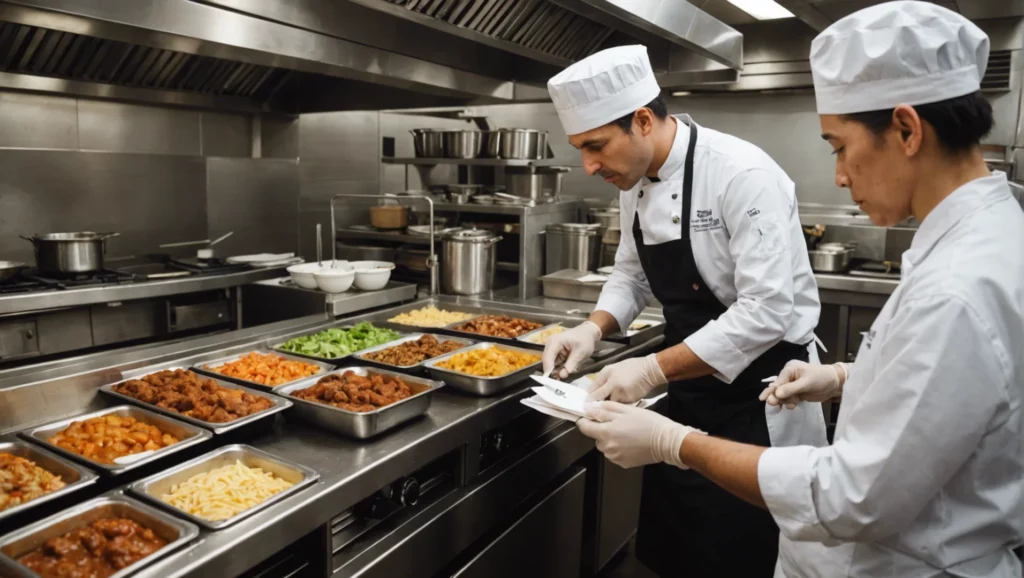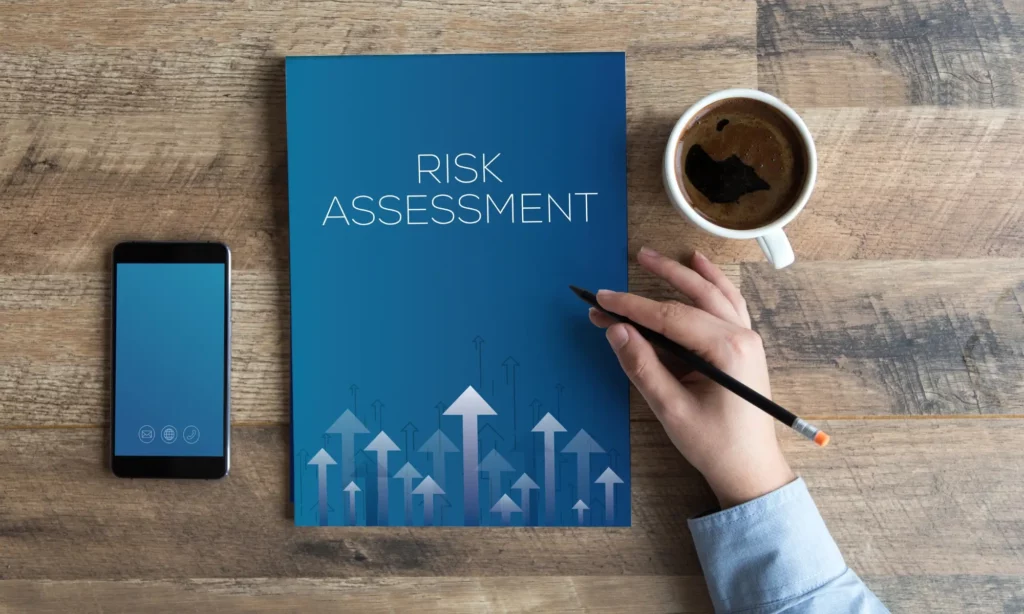Food safety compliance and risk management are undergoing rapid transformation as we approach 2025. The landscape of food safety is shifting dramatically, driven by stricter regulatory requirements and technological advancements that reshape how businesses manage safety protocols.
The Food Safety Modernization Act (FSMA) stands at the forefront of these changes, demanding robust preventive controls and comprehensive documentation from food businesses. Companies must now adapt their operations to meet these evolving standards while maintaining operational efficiency.
Digital transformation has become a critical enabler in this new era of food safety management. Advanced technologies like:
- Real-time monitoring systems
- Automated documentation tools
- AI-powered predictive analytics
- Cloud-based compliance platforms

These innovations are revolutionising how businesses track, manage, and ensure food safety compliance. The integration of digital solutions not only enhances accuracy and efficiency but also provides unprecedented visibility into food safety processes.
Digital transformation is crucial for food safety compliance and risk management in 2025. By combining advanced technologies with strict adherence to regulations, we can create a strong system that protects public health and maintains consumer trust.
As we navigate through 2025, organisations that embrace these technological advances while maintaining strict regulatory compliance will be best positioned to protect consumer health and maintain market leadership.
What Are the Key Regulatory Requirements Shaping Food Safety Compliance in 2025?
The FDA’s Food Safety Modernization Act (FSMA) sets stringent requirements for food businesses in 2025. These regulations demand comprehensive written food safety plans backed by scientific data and risk assessment protocols.
Core FSMA Requirements:
- Documented hazard analysis identifying biological, chemical, and physical risks
- Risk-based preventive controls with validation studies
- Supply chain programme verification
- Environmental monitoring protocols
- Allergen control procedures
- Current Good Manufacturing Practice (cGMP) compliance
Food facilities must implement robust process management systems that track critical control points throughout production. This includes real-time monitoring of parameters like temperature, pH levels, and moisture content.
Read more at: Food Safety Compliance Services That Help You Stay Audit-Ready
Essential Documentation Requirements:
- Written food safety plan
- Hazard analysis records
- Preventive controls monitoring data
- Verification procedure results
- Corrective action records
- Supply chain documentation
- Training records
A well-structured recall plan stands as a critical component of FSMA compliance. Your plan must detail:
- Product identification methods
- Lot coding systems
- Distribution records
- Communication protocols
- Mock recall procedures
The regulations require facilities to conduct environmental monitoring, particularly for ready-to-eat foods where pathogens pose significant risks. This includes regular testing of food contact surfaces and surrounding areas to detect potential contamination sources.
Sanitation controls must address cleaning procedures, employee hygiene practices, and pest management. These controls require validation through microbiological testing and visual inspection records.
How Is Digital Transformation Changing Food Safety Risk Management?
Digital transformation has transformed food safety management through innovative technologies that make compliance processes easier. The old paper-based HACCP systems have evolved into advanced digital platforms, allowing for real-time monitoring and immediate response capabilities.

Digital HACCP Solutions
Some of the key features of digital HACCP solutions include:
- Automated temperature monitoring systems
- Mobile-friendly inspection checklists
- Digital documentation of critical control points
- Instant alerts for compliance breaches
Real-time data collection has greatly improved the accuracy and efficiency of food safety protocols. Staff can now record measurements, complete checks, and document corrective actions using mobile devices, which eliminates manual entry errors and reduces administrative tasks.
AI-powered systems analyse patterns in collected data to identify potential risks before they become serious problems. These predictive analytics capabilities enable:
- Early detection of equipment malfunctions
- Identification of temperature control patterns
- Recognition of hygiene compliance trends
- Assessment of supplier performance metrics
The centralisation of data through cloud-based platforms creates a single source of truth across operations. This structured approach allows organisations to:
- Maintain consistent safety standards across multiple locations
- Adapt quickly to regional regulatory requirements
- Share best practices across the supply chain
- Generate comprehensive compliance reports instantly
The integration of IoT sensors with digital platforms provides continuous monitoring of critical parameters, creating an automated safety net that supports human oversight while reducing the risk of oversight errors. Learn more about parameters on https://pmc.ncbi.nlm.nih.gov/articles/PMC3883227/
What Are the Best Practices for Implementing Digital Solutions in Food Safety Management?
Successful implementation of digital food safety solutions requires a strategic approach focused on selecting the right tools and processes. Modern compliance software platforms like Squizify offer comprehensive features designed to streamline food safety management:
1. Customised Digital Checklists
- Automated task scheduling
- Real-time completion tracking
- Industry-specific templates
- Regulatory requirement alignment
2. Integration of Smart Hardware Solutions
- Temperature monitoring sensors
- Automated food labelling systems
- Freight temperature tracking devices
- Mobile scanning equipment
3. Secure SaaS Platform
- 24/7 data accessibility from any location
- Multi-user access with role-based permissions
- Automated backup and data protection
- Real-time alerts and notifications
The implementation process should be tailored to your organisation’s specific needs through:
- Discovery calls to assess current processes
- Customised software demonstrations
- Phased rollout planning
- Staff training programmes
- Regular system performance reviews
Leading compliance solutions adapt to various industry requirements across hospitality, healthcare, aged care, manufacturing, and retail sectors. This flexibility ensures that food safety protocols align with both regulatory standards and operational workflows.
Why Is Executive Support Crucial for Successful Food Safety Digital Transformation?
Executive leadership plays a pivotal role in driving successful digital transformation of food safety programmes. Without strong executive buy-in, organisations struggle to implement and maintain effective digital compliance solutions.
Leadership’s Impact on Digital Adoption
Executives can influence the adoption of digital compliance tools by:
- Setting clear expectations for digital compliance tool usage
- Allocating dedicated resources for implementation
- Creating accountability measures across departments
- Establishing food safety as a core business priority
The return on investment (ROI) of food safety technology investments can be seen through:
- 40-60% reduction in manual documentation time
- Decreased risk of costly food safety incidents
- Lower audit preparation costs
- Improved operational efficiency
- Enhanced brand protection
Resource Allocation Considerations
When implementing food safety technology, executives need to consider the following resource allocation factors:
- Initial technology investment
- Staff training programmes
- System maintenance costs
- Ongoing software subscriptions
- Technical support requirements
Cross-departmental collaboration becomes achievable when executives actively champion food safety initiatives. Department heads align their operational goals with food safety objectives through: Click here to find more about operational.
- Regular cross-functional meetings
- Shared performance metrics
- Integrated workflow systems
- Joint responsibility for compliance outcomes
Successful digital transformation requires executives to demonstrate sustained commitment through consistent communication, visible support, and strategic resource deployment. Companies with strong executive backing report higher adoption rates of digital compliance tools and improved food safety outcomes.
How Can Cross-Industry Collaboration Enhance Food Safety Compliance Across Supply Chains?
Cross-industry partnerships create powerful synergies in food safety management. When hospitality venues, healthcare facilities, manufacturers, and supermarkets share their expertise and resources, they build stronger supply chain networks.
Consider these collaborative advantages:
- Unified Data Standards: Shared digital platforms enable consistent data collection and reporting across different sectors, creating a standardised approach to food safety compliance
- Real-Time Hazard Alerts: Connected systems allow rapid communication of potential risks between partners, from farm to fork
- Resource Optimisation: Partners can share costly compliance tools and technologies, making advanced solutions accessible to businesses of all sizes
Supply chain transparency improves when industries adopt compatible digital tools. A manufacturer using Squizify’s temperature monitoring sensors can seamlessly share data with their hospitality clients, ensuring product safety throughout distribution.
Integrated systems strengthen collective hazard management:
- Automated alerts notify all affected parties of compliance issues
- Shared dashboards provide visibility into supplier performance
- Digital audit trails track products across multiple handling points
The healthcare sector’s stringent safety protocols can inform best practices in hospitality. Manufacturing quality control methods enhance supermarket operations. This cross-pollination of knowledge creates robust safety standards benefiting all stakeholders.
Collaborative platforms enable:
- Standardised supplier assessments
- Joint emergency response protocols
- Shared compliance documentation
- Coordinated recall procedures
What Emerging Technologies Are Shaping Risk Assessment and Sanitation Programs?
Advanced technologies are transforming risk assessment and sanitation practices in food safety management. With the help of predictive analytics, businesses can now identify potential hazards before they occur, shifting from a reactive approach to a proactive risk management strategy.
AI-Powered Risk Assessment
AI-powered risk assessment uses various techniques to analyse data and identify potential food safety risks:
- Machine learning algorithms analyse historical data patterns
- Real-time monitoring systems detect anomalies in operations
- Automated alerts flag potential food safety risks
- Scenario modeling simulates various risk situations
Data-Driven Sanitation Programs
Data-driven sanitation programs bring precision to cleaning protocols through:
- Smart sensors measuring chemical concentrations
- Automated dispensing systems preventing over-usage
- Digital verification of cleaning procedures
- Real-time effectiveness monitoring
IoT Devices in Sanitation Management
The integration of IoT devices enhances sanitation management:
“Smart sensors can detect microbial growth, measure surface cleanliness, and validate sanitation effectiveness in real-time, reducing the risk of foodborne illness outbreaks.”
Technology-Enabled Improvements
Technology-enabled improvements include:
- Digital documentation of cleaning procedures
- Automated compliance tracking
- Performance analytics dashboards
- Remote monitoring capabilities
These technological advancements create a strong framework for maintaining food safety standards while optimising resource usage. The combination of predictive analytics and smart sanitation systems enables facilities to maintain the highest safety standards while reducing operational costs.
Blockchain technology adds another layer of verification, creating unchangeable records of sanitation procedures and risk assessments. This transparency helps maintain accountability and builds trust throughout the supply chain.
How Can Training and Technical Assistance Support Compliance Efforts in 2025?
Effective training programs are the foundation of successful food safety compliance. The FDA’s Food Safety Plan Builder is an important tool that helps businesses create detailed safety procedures that are specific to their operations.
Key Training Components for 2025:
- Digital compliance tool proficiency training
- Real-time monitoring system operation
- Risk assessment methodologies
- Emergency response protocols
- Updated regulatory requirement workshops
Technical assistance networks provide crucial support through:
- 24/7 expert consultation services
- Virtual reality simulation training
- Interactive compliance workshops
- Customised guidance for specific industry sectors
The integration of AI-powered learning management systems enables personalised training paths for staff members, tracking their progress and identifying areas needing additional focus. These systems adapt to each employee’s learning pace, ensuring thorough understanding of critical safety protocols.
Regular skill assessments and certification updates maintain high compliance standards across organisations. Companies like Squizify offer built-in training modules that automatically track completion rates and compliance levels, streamlining the documentation process required by regulatory bodies.
Conclusion
To achieve this, organisations must:
- Invest in smart technology – implement digital solutions like Squizify for automated compliance management
- Commit to strong leadership – drive cultural change and allocate resources effectively
- Form cross-industry partnerships – share best practices and enhance supply chain transparency
- Develop staff continuously – build expertise in emerging technologies and regulations
The future of food safety depends on businesses that are willing to adapt, invest, and collaborate. By prioritising these elements, organisations can create resilient food safety systems that go beyond regulatory requirements and set new standards for operational excellence.


